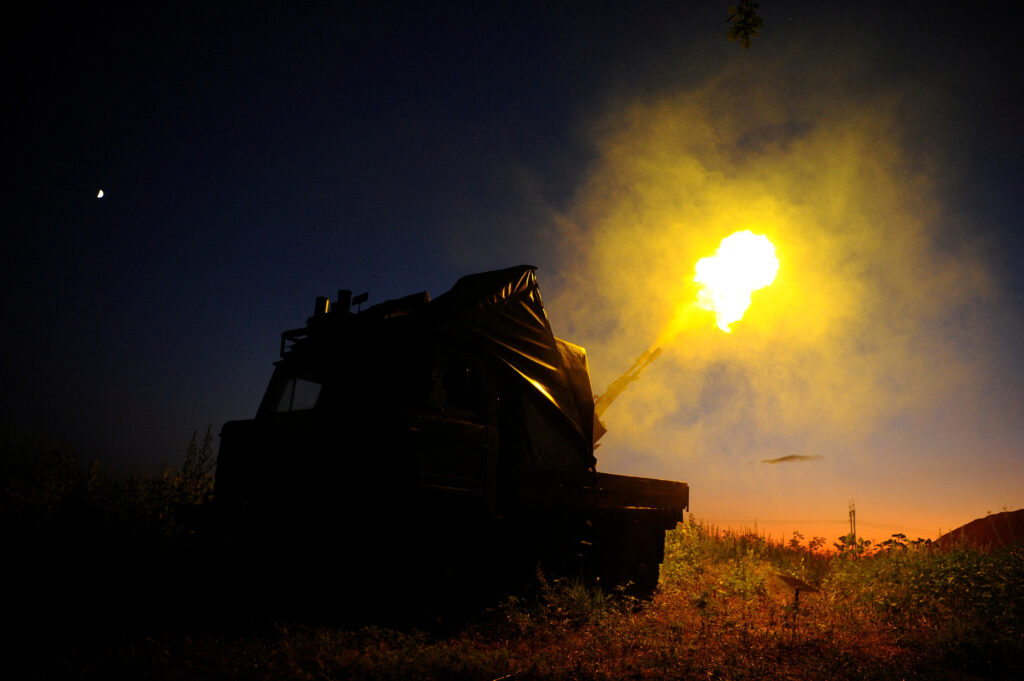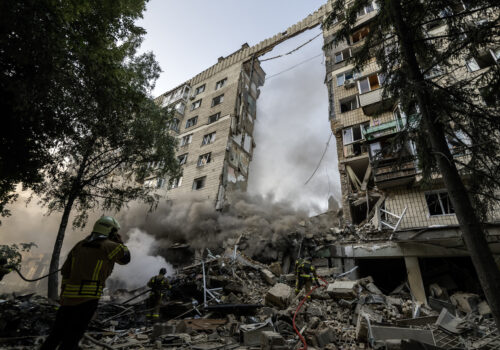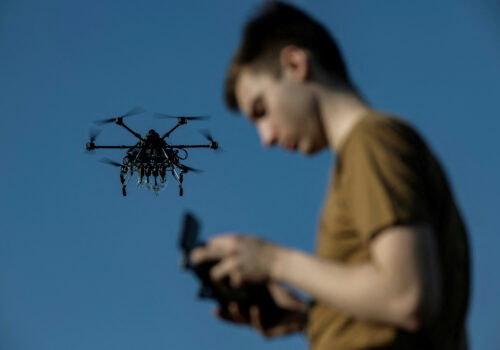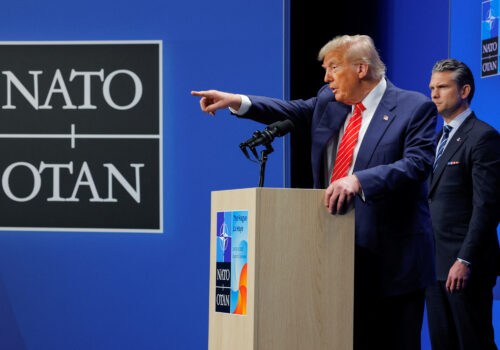The title question is prompted by the news that the Department of Defense has precipitously halted the supply to Ukraine of desperately needed weapons that can help thwart Russia’s unprecedented magnitude of attacks on civilian targets in Ukraine. Among the systems halted, according to reports, are vital interceptors for Patriot air defense systems, precision artillery rounds, and the Hellfire and other missiles that Ukraine launches from its F-16 fighters and drones.
According to a statement from the White House Press Office, the decision was taken by the Pentagon after a review of munitions stockpiles and US supplies to other nations. Included in this list of weapons that the Pentagon has stopped from going to Ukraine are systems that have not been deployed by the US military in decades, nor have they been deployed by other close allies. By any calculation, the limited number of munitions ready to cross the Polish border into Ukraine will not even begin to fix the munitions procurement and stockpile process, which has been broken for decades.
Undercutting peace efforts
Every military service has historically played fast and loose with resource allocation, raiding munitions accounts to fund priority projects. There were insufficient munition stocks of all types for all service components well before Russia launched its full-scale invasion of Ukraine. And while there is a glimmer of good news that this Pentagon wants to fix this, it should hardly be seen as an epiphany that the Department of Defense realizes there are decreased stocks following high US expenditure rates in the Red Sea thwarting Iranian attacks against Israel and US assets in the Middle East.
It is without question that the United States must ensure that its military readiness is not compromised. But simply repeating the “America first” statement cannot supplant a comprehensive understanding of broader US interests. With that in mind, this decision is a serious mistake that undercuts the administration’s efforts to make peace in Ukraine. The problem seems to be insufficient coordination within the Trump administration, especially with the Department of Defense.
This news comes days after the NATO Summit in The Hague, at which the United States and its allies under President Donald Trump’s leadership made the historic decision to raise defense and defense-related expenditures to 5 percent of gross domestic product by 2035 because of the dangers that Russian policy, including its aggression in Ukraine, pose to Europe. That’s why the NATO communiqué said that European support to Ukraine would count as part of allies’ defense spending commitments. The decision comes as Russia continues to obstruct Trump’s proposals to establish a stable cease-fire. It was no coincidence that Trump said at the NATO Summit that he deflected Russian President Vladimir Putin’s proposal to help achieve a settlement on Iran’s nuclear program, and he instead asked Putin to “help Russia” make peace with Ukraine.
The decision comes against the backdrop of a massive Russian air campaign against Ukrainian cities and civilians, and after Trump himself promised to see if he can find more air defense equipment to help Ukraine deal with this increased threat. Yes, Trump said such equipment is hard to find, but how could the Pentagon decide days after the president’s statement to halt the supply of precisely this equipment?
What Putin is banking on
Since March, Trump has offered several proposals to Ukraine and Russia to establish a cease-fire. Ukraine has accepted each proposal; Russia has said no. Putin is banking on his ability to continue offensive operations and take more Ukrainian territory. Critical to Putin’s calculations is that US support to Ukraine, and in particular the supply of weapons, will diminish with time. Putin is not hiding his intentions: He said at the St. Petersburg International Economic Forum on June 20 that “the Russian and Ukrainian people are one nation, in fact. In this sense, all of Ukraine is ours.” He added that “we have an old parable, an old rule: wherever a Russian soldier steps, it is ours.”
Senior Russian officials have said that there can be no peace in Ukraine until the United States and its allies stop supplying weapons to Ukraine (which would leave Ukraine vulnerable to Moscow’s control). The Trump administration’s concept for a stable peace for Ukraine has included arms from the West. That’s why the critical minerals deal signed earlier this year notes that US equity in the joint project to development Ukraine’s natural resources would grow in exchange for additional US weapons for Ukraine. The Pentagon aid cutoff only encourages Moscow to think that the Trump administration will in fact accept the Kremlin’s precondition for “peace.” That’s why Dmitry Peskov, Putin’s spokesman, hailed the Pentagon initiative, saying that “the fewer the number of weapons that are delivered to Ukraine, the closer the end of the special military operation.”
The United States has not gone to war against a near-peer enemy since Korea. This, combined with the most innovative, dynamic, and modern battlespace in history in Ukraine, has baffled past and present Pentagon leadership, none of whom have experienced personally what Ukraine endures daily in any conflicts in which they have been involved. Instead of punishing Ukrainians for their desire simply to exist, US military leaders can learn from Ukrainian forces how to accomplish what they want to do faster, better, and cheaper.
Trump’s bold strike on Iran’s nuclear program’s underground facilities made clear that he understands that “peace through strength” is the way to deal with the dangers posed by Tehran’s efforts to acquire nuclear weapons. But the mixed message that his administration is conveying to Moscow is not peace through strength. Putin clearly sees that. That’s why in Trump’s July 3 phone call, Putin made clear that while he is willing to negotiate, his goals for the war in Ukraine have not changed. In other words, he sees no need to compromise.
John E. Herbst is the senior director of the Atlantic Council’s Eurasia Center and a former US ambassador to Ukraine.
Further reading
Wed, Jul 2, 2025
Russia applauds US decision to halt key weapons deliveries to Ukraine
UkraineAlert By Peter Dickinson
The Kremlin has cheered this week's US decision to halt the delivery of crucial defensive weapons to Ukraine as Russia continues to pursue its maximalist goal of extinguishing Ukrainian statehood, writes Peter Dickinson.
Wed, Jul 2, 2025
Ukraine’s drone wall is Europe’s first line of defense against Russia
UkraineAlert By
Ukraine's drone wall is rapidly emerging as Europe's first line of defense against the mounting military threat posed by an expansionist Russia, writes David Kirichenko.
Thu, Jun 26, 2025
Dispatch from The Hague: It’s been Trump’s week in Europe and Iran
Inflection Points By Frederick Kempe
What connects the recent events in Iran and at the NATO Summit is that they won’t be remembered for the threats countered but rather for the opportunities seized.
Image: A truck with mounted anti-aircraft cannon, of the of 127th Separate Brigade of the Territorial Defence Forces of the Ukrainian Armed Forces, fires towards Russian drones and missiles during an overnight shift, amid Russia's attack on Ukraine, in Kharkiv region, Ukraine July 2, 2025. Anatolii Lysianskyi/Press Service of the 127th Separate Brigade of the Territorial Defence Forces of the Ukrainian Armed Forces/Handout via REUTERS




